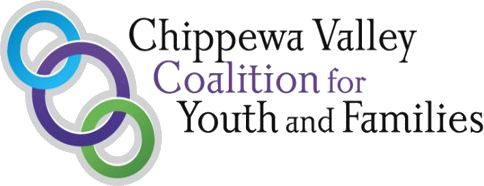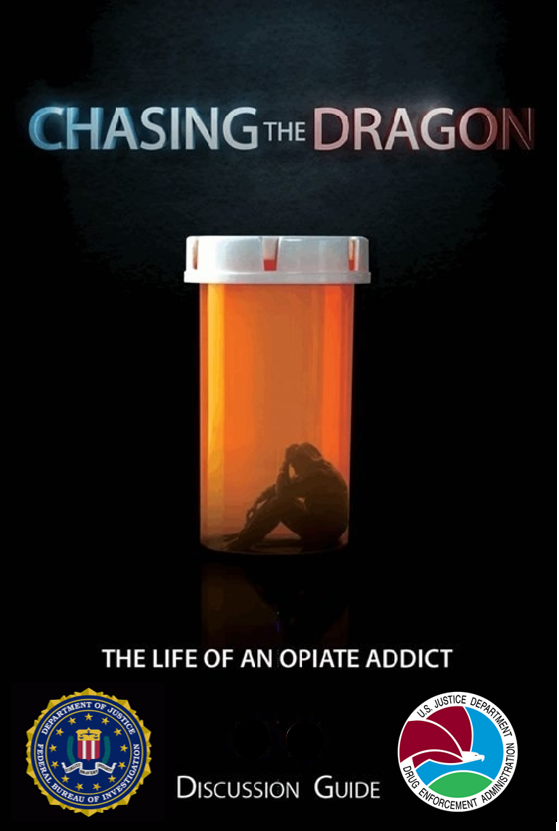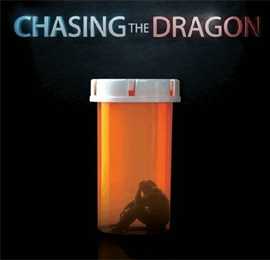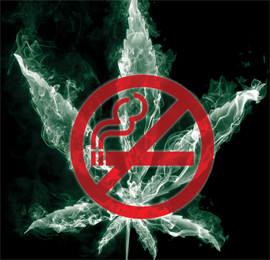Opioids
Chasing the Dragon Discussion Guide
Letter For Educators
Dear Educator,
On behalf of our two agencies, we would like to thank you for incorporating Chasing the Dragon: The Life of an Opiate Addict into your school’s curriculum. The opioid and prescription drug abuse epidemic that is sweeping the country is a problem unlike anything we have seen before. We created this documentary to help students develop a greater understanding of this crisis to create a deeper appreciation about the dangers of opioid addiction. Our goal is to reach youth before an addiction can set in.
We have worked with educators to create a study guide to supplement the documentary. We believe the enclosed guide will help stimulate thoughtful and honest dialogue about this epidemic. Through these conversations, we hope to prevent additional students from becoming victims.
We thank you for your help in spreading this message to students, parents, and fellow educators about this horrible epidemic. If, as you begin to implement this documentary into your classrooms, you find that you need additional resources on this topic, or if you would like experts from our respective agencies to speak in your schools, please contact your local FBI or DEA field office. We stand ready to help.
Sincerely,
James B. Comey
(Former) FBI Director
Chuck Rosenberg
Acting DEA Administration
Purpose and Objectives
This documentary gives a face to the lurking evil of opiate addiction that statistics measure to be at epidemic levels. Federal, state, and local law enforcement officers are asking educational institutions across the country to inform teenagers of the hazards of drug abuse and expose the truth about the opiate epidemic. The purpose of this film and follow-up activities is to raise awareness of drug abuse and the profound downward spiral that can be caused by opiate addiction. The film content has been provided by actual people who abused opiates or whose children abused opiates. They selflessly shared their unfiltered, impassioned, unscripted, and painful accounts to try to stop other people from taking drugs and destroying lives.
The objectives of the Discussion Guide are to:
- Have students process and interact with the content covered in the film.
- Answer questions to demonstrate their understanding of the material. Some of the questions ask for direct recall of information while others require students to synthesize content and respond.
- Have students reflect on how their own lives and lives of family members could be ruined if they or their friends were addicted to opiates. Discussion facilitators should ask students to share their personal feelings, thoughts, and concerns.
Promote students to become proactive in the fight against drug abuse. A set of culminating activities asks students to integrate ideas by designing diagrams, writing proposals, using social media, creating art projects, and planning initiatives. Students are not watching this film, answering questions, and completing projects to pass a test; they are doing this to save lives—maybe even their own.
Terms and Definitions
Chasing the Dragon – expression given to the pursuit of the original or ultimate but unattainable high, which can lead to a dangerous spiral of legal and health consequences.
Heroin – an opioid drug that is synthesized from morphine, a naturally occurring substance extracted from the seed pod of the Asian opium poppy plant. [1]
Opiates/Opioids – drugs (such as heroin) derived from compounds found in the opium poppy plant, or synthetic drugs (such as prescription painkillers) that contain substances that mimic these compounds. These terms are often used interchangeably.[2]
Oxycodone – a semi-synthetic narcotic analgesic that is a popular drug of abuse. It is synthesized from Thebaine, a constituent of the poppy plant. [3]
Tolerance – a state in which a person no longer responds to a drug and a higher dose is required to achieve the same effect. [4]
Addiction – “A chronic, relapsing disease characterized by compulsive drug seeking and use—despite serious, even devastating consequences—and by long-lasting chemical changes in the brain.” When a person is addicted to a drug, finding and using that drug becomes the most important thing—more important than family, friends, school, sports, or money. [5]
Withdrawal – the wide range of symptoms that occur after stopping or dramatically reducing opiate drugs after heavy and prolonged use. Symptoms include but are not limited to agitation, anxiety, sweating, body aches, abdominal cramps, nausea, vomiting, and diarrhea. [6]
[1] “Heroin,” National Institute on Drug Abuse, last modified June 2018, http://www.drugabuse. gov/drugs-abuse/heroin
[2] “Heroin,” National Institute on Drug Abuse, last modified June 2018, http://www.drugabuse. gov/drugs-abuse/heroin
[3] Drugs of Abuse, 2017 Edition (Drug Enforcement Administration, 2017), 47, accessed January 19, 2016, http://www.dea.gov/pr/multimedia-library/publications/drug_of_abuse.pdf
[4] Hussar, D. A. Tolerance and Resistance to Drugs. Merck Manuals Consumer Version.
[5] The National Institute on Drug Abuse Blog Team. (2011, September 9). Word of the Day: Addiction. Retrieved from https://teens.drugabuse.gov/blog/post/word-day-addiction on October 30, 2018
[6] “Opiate withdrawal,” MedlinePlus, U.S. National Library of Medicine, last modified April 5, 2013, https://www.nlm.nih.gov/medlineplus/ency/article/000949.htm
Central Themes
The film organizes the interviewees’ testimony along a series of central themes showing how people become addicted to opiates and the severe consequences of addiction. Students should identify these themes, listed below, during class discussion of content covered in the film. It would be helpful to list these themes on the board as reminders for further discussion.
- Everyone is at risk of opiate addiction—it does not discriminate. The opiate epidemic has spread rapidly due to a false perception that only certain demographics are at risk. Persons of all life circumstances become victims each day. High school students are no exception.
- Opiate addiction can occur quickly, and, in most cases, individuals first become addicted by abusing pain pills.
- Prescription drugs are very accessible and can rapidly lead to addiction if abused.
- A life-consuming routine that revolves around seeking opiates emerges once a person becomes addicted. It is this routine that is best described by the expression “chasing the dragon.”
- Increasing tolerance to opiates can often lead to a more costly and dangerous addiction in terms of quantity, substance type, and method of abuse. It is this dynamic of opiate addiction that can cause individuals to take greater and greater risks as they pursue the unattainable experience of the first high.
- Legal consequences often result from the lengths users will go to support their opiate habit. The grip of addiction can lead an ordinarily law-abiding person to cross legal boundaries he/she would normally have respected—many opiate-addicted individuals turn to theft, fraud, and prostitution to obtain drugs. The public harm associated with opiate abuse has many forms, affecting more than just the addicted persons themselves.
- Withdrawal from opiates is often extremely difficult and represents a significant challenge to breaking the cycle of abuse. Addicted persons often find their pursuit of opiates is no longer for the purpose of getting high but to avoid experiencing the symptoms of withdrawal.
- Overdoses are common. Misconceptions exist that overdoses are only associated with abuse of large quantities of drugs. The risk of overdose is real and can occur at any point in the cycle of abuse.
- Death can be a tragic consequence of opiate abuse. The victims of an opiate overdose resulting in death include not only the deceased but also the family and friends left in the wake of losing a loved one.
- Saying no to abusing opiates—or any drug—is a primary strategy to stay safe.
- Peers should support each other in making wise choices and countering the pressures placed on young people today.
- Help is available to those who need it. Opiate addiction is not generally something someone can overcome alone, and we should all help ensure anyone who is struggling finds the resources he/she needs.
Statistics
- More than 93% of those identified as needing treatment for dependence or misuse of an illicit drug believe they do not need help. [1]
- In the past year, 53.1% of people who misused Prescription pain relievers were given, bought from, or taken for a friend or relative. [2]
- Nearly all people who use heroin also use at least one other drug. [3]
- People who take prescription painkillers can become addicted with just one prescription. [4]
- A large percentage of individuals arrested for major crimes—including homicide, theft, and assault—are under the influence of illicit drugs. [5]
- In the 1960s, more than 80% of opioid abusers got hooked on heroin first. In the 2000s, 75% of opioid abusers started with prescription opioids. [6]
- In 2017, more than 10 million people 18 years and older in the U.S reported the misuse of a prescription pain reliever. [7]
- Each day, 46 people die from an overdose of prescription painkillers in the U.S. [8]
[1] Center for Behavioral Health Statistics and Quality, Behavioral Health Trends in the United States: Results from the 2014 National Survey on Drug Use and Health: Detailed Tables (2015), Table 1.1A, http://www.samhsa.gov/data/sites/default/files/NSDUH-DetTabs2014/ NSDUH-DetTabs2014.pdf
[2] Substance Abuse and Mental Health Services Administration, The National Survey on Drug Use and Health: PowerPoint (2017), Slide 16, See figure 26 in the 2017 NSDUH Report for additional information Retrieved from: https://www.samhsa.gov/data/sites/default/files/nsduh-ppt-09-2018.pdf
[3] Christopher M. Jones PharmD, Joseph Logan, PhD, R. Matthew Gladden, PhD, Michele K. Bohm, MPH, “Vital Signs: Demographic and Substance Use Trends Among Heroin Users — United States, 2002-2013,” Morbidity and Mortality Weekly Report 64, no. 26(2015 ) :719725,http://www.cdc.gov/mmwr/preview/mmwrhtml/mm6426a3.htm
[4] “Understanding the Epidemic,” Centers for Disease Control and Prevention, National Center for Injury Prevention and Control: Prescription Drug Overdose, last modified October 28, 2015, http://www.cdc.gov/drugoverdose/epidemic/.
[5] Substance Abuse: The Nation’s Number One Heath Problem (Waltham, MA: Schneider Institute for Health Policy, Brandeis University, 2001), 67, http://www.rwjf.org/content/dam/farm/ reports/reports/2001/rwjf13550.
[6] Theodore J. Cicero, PhD, Matthew S. Ellis, MPE, Hilary L. Surratt, PhD, Steven P. Kurtz, PhD, “The Changing of Heroin Use in the United States: A Retrospective Analysis of the Past 50 Years,” JAMA Psychiatry 71, no. 7 (2014): 821-826, http://archpsyc.jamanetwork.com/article. aspx?articleid=1874575.
[7] Substance Abuse and Mental Health Services Administration, The National Survey on Drug Use and Health: PowerPoint (2017), Slide 13, Retrieved from: https://www.samhsa.gov/data/sites/default/files/nsduh-ppt-09-2018.pdf
[8] Center for Disease Control and Prevention. (2018). Opioid Painkiller Prescribing . Retrieved from Center for Disease Control and Prevention: https://www.cdc.gov/vitalsigns/opioid-prescribing/index.html
Discussion Questions
A list of questions is provided below to help organize the discussion in a manner that will help students discover the critical points of the film and draw conclusions they can use to develop strategies to avoid drug abuse. (It may be helpful to write the highlighted themes on the board as they are identified during discussion.)
Question 1: What did the opiate-addicted individuals in the film have in common prior to becoming addicted?
Theme Development:
- Draw attention to answers highlighting that the addicted persons in the film had normal and, in some cases, even privileged lives.
- Point to the conclusion that everyone is at risk if not informed.
- Some students may identify that most persons used marijuana or other drugs prior to abusing opiates. This issue will be addressed in questions three and four.
Question 2: What were the ways the people in the film got hooked on opiates?
Theme Development:
- The 2 “typical” paths leading to opiate abuse are shown in the film. Some people start using other drugs, e.g. marijuana, which can eventually lead to the use of opiates. Others abuse opiates, often after first being prescribed an opiate medication for some condition.
Question 3: Many argue that using alcohol, marijuana, or other seemingly “minor” drugs acts as a gateway to stronger, more lethal drugs and addictions. In hearing the real stories of the addicted persons in this video, do you believe there is support for this claim?
Theme Development:
- Those in the video telling their own stories indicated marijuana use prior to opiates.
- Statistic: “Nearly all people who use heroin also use at least one other drug.” (Vital Signs, MMWR 2015)
- Discuss the impact of impaired judgment from abuse of drugs or alcohol and how that may lower inhibitions to try an opiate.
Question 4: What influence did friends have on Sarah, Matt, and Cierra’s use of drugs?
Theme Development:
- Sarah: “I met the crowd who did do stuff. You are who you hang out with.”
- Matt: “My buddy said, ‘Hey, these will get you high. Let’s do some.’ I was like, okay.”
- Trish: “… the friends helped pick the road that she (Cierra) chose.”
Question 5: What did you learn about how fast someone can become addicted? If someone said to you, “But it’s only one pill—you can’t get addicted from just one,” how would you respond?
Theme Development:
- Point to the theme that opiate addiction can occur quickly.
- All people who spoke described becoming addicted quickly and needing more and more opiates. Remember, if someone is taking these drugs, they are not “trying”—they are actually “doing.
- Statistic: “People who take prescription painkillers can become addicted with just one prescription.” (CDC, 2015)
Question 6: How did the people in the film describe their daily routine once opiate addiction set in?
Theme Development:
- Dr. Bassam: “You can’t maintain an opiate addiction and a normal life for very long.”
- Cory: “I started stealing from my family and friends. … Whatever money I had in my pocket was all going to it.”
- All the persons in the film describe a life-consuming routine. Talk to students about how an opiate addiction would interfere with their daily lives, including consequences they can relate to. Discuss impact on sports and activities, loss of friends, ability to remain in school, etc.
Question 7: What did Cory mean when he said he was eventually just taking opiates to “stay well”?
Theme Development:
- The initial pursuit of getting high ultimately becomes more difficult to achieve due to an increasing tolerance to opiates. Eventually, opiate-addicted persons need to take the drug to simply keep from going through withdrawal.
Question 8: Since addicted persons need more and more prescription painkillers to get high or “stay well,” what are some consequences they may face that you learned about from the film?
Theme Development:
- Persons addicted to prescription painkillers often turn to more aggressive methods of taking the drugs (orally, smoking, snorting, injecting). Eventually, many will turn to heroin, which is cheaper than pills.
- People addicted to opiates might turn to theft, prostitution, or other crimes to obtain money to finance their addiction. The grip of addiction can lead an ordinarily law-abiding person to cross legal boundaries he/ she would normally have respected.
- Ask for examples from the film of uncharacteristic or illegal behavior as a result of addiction:
- Cry: Stole from family and friends
- Sarah: Prstitution
- Cierra: Turned t stripping, stole checks from grandmother, theft from family, spent $800 a week, convicted felon at 18
- Point out the frequency of legal consequences, like going to jail, as Cierrra did.
- Discuss the potential impact on a person’s future from a felony conviction:
- Career limitatins
- Can’t vte
- Can’t wn a firearm
- Scial stigma
Question 9: What are the similarities and differences between prescription opiates and heroin?
Theme Development:
Similarities:
- Both are opiates and highly addictive.
- Both can be abused in similar manners.
- Both are easily accessible. Trish felt her daughter was able to obtain the heroin more
- easily.
Differences:
- Heroin is often cut with harmful substances like meat tenderizer, which can lead to major tissue damage, dangerous infections, loss of limbs, cardiac arrest, and other severe health consequences.
- The strength of heroin can be unpredictable, resulting in frequent overdoses.
- Heroin is cheaper and has no medical use.
Question 10: What were the main reasons users switched from prescription pain medicine to using heroin?
Theme Development:
- Cost is one of the main reasons. Heroin is a cheaper substitute.
- Cry: “It was cheaper, so of course I got into it.”
- Trish: “I think she was able t access more heroin easily than the pills”
Question 11: How did people in the film describe opiate withdrawal?
Theme Development:
- Ms. Taylor (expert): “…withdrawal…looks like extraordinary physical and muscular pain, and very few people can actually manage it.”
- Matt: “You feel like you just want to die.”
- Cory: “It’s just something I never want to experience again. It is the worst feeling ever.”
Question 12: Was Cierra the only victim when she died?
Theme Development:
- Point out the broader tragedy of death as a result of narcotics overdose. Trish: “… this doesn’t just affect you. It affects everybody in your family for the rest of their lives. That we’re the ones stuck here missing you.”
Question 13: Trish said that her daughter died six days after her release from jail, where she had received treatment every day for seven months. Cory continued to abuse opiates. What do these events say about the long-term hold of opiates on persons who abuse them?
Theme Development:
- These details and others throughout the film show the stranglehold of the drugs on the users. The choice to abuse an opiate can have long-term consequences.
Question 14: What advice did we get from the interviewees at the end of the film?
Theme Development:
- Cory: “It’s just not worth it at all, you know. If I could go back, if I knew now what I know about this … if I could go back, I would do it all different. Starting with that first pill. I wouldn’t touch it.”
Question 15: After watching it, why do you think the FBI and DEA are putting this film out to high school students specifically?
Theme Development:
- Point out the importance of perception and how a “drug culture” can create an environment that puts students at risk in the absence of a fact-based counter narrative.
- Help students to discover that they are the ones who are in the best position to help each other resist temptation, and as a group they have an obligation to stand up and take control of their own culture. Their voices matter.
Culminating Activities
School administrators are encouraged to broaden their current anti-drug curricula to include activity-based learning where students can process information in a variety of formats to generate practical ideas, form decisions in advance of temptation, and raise general awareness.
The following activities can be used to integrate the lessons learned from the preceding class discussion:
- Construct a flow chart or diagram that includes the following key components of an effective drug avoidance strategy:
- Say no.
- Help is available.
- Support each other to overcome peer pressure.
- Do not believe “just trying” something is possible—trying is doing.
- Never take a pill that has not been prescribed by a qualified physician for a legitimate reason.
- Do not go to parties where drugs are present and avoid situations where drugs may be offered.
- Inform a parent, guardian, school administrator, school resource officer, or teacher if you are aware of someone abusing drugs; you can remain anonymous.
- Draft a proposal to a state representative, your school district’s superintendent, or to a federal, state, or local law enforcement agency about an initiative to raise awareness of teen drug abuse.
Use research-based evidence to support your recommendation.
- Create a painting, drawing, digital image, or a collage that depicts what you think someone going through the pain of withdrawal might feel.
(Students can look to the Internet to find inspiration in works such as Edvard Munch’s The Scream.)
- Suppose a friend or family member has started to abuse prescription or illegal drugs. You have noticed a change in their behavior and are deeply concerned for their well-being. What would you say to this person to try to convince them to quit using drugs and get the help they need?
How would you convey this message to them (in person, via e-mail, phone call, text)? Draft a message or script based on the medium in which you would communicate.
- Working in a small group, draft several steps you would like to present to your principal about establishing a culture in school opposed to drug use.
This campaign/movement may include a catch phrase, meme, flyer, video, or activities aimed at establishing a culture where drugs are “not cool” and “everyone is not doing it.” Consider how social media can be used to spread your message. Nearly all people who use heroin also use at least one other drug.




